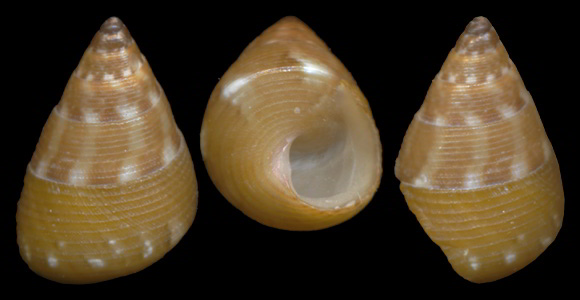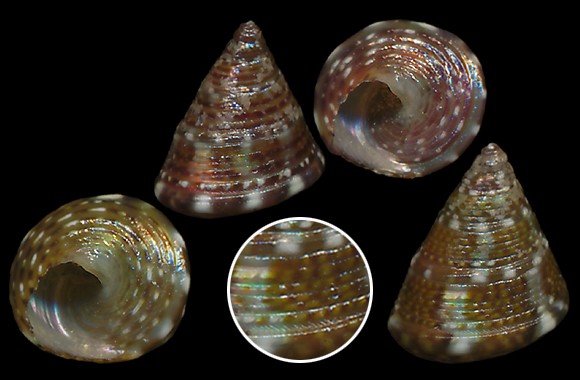
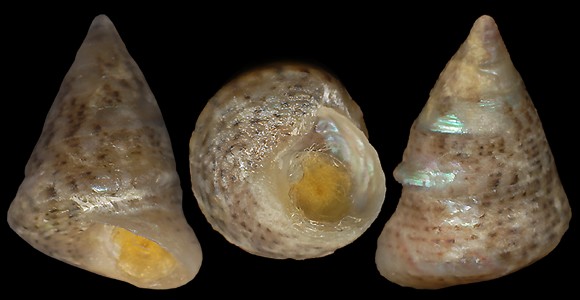
Western form: finely corded, with a weaker sculpture than exasperatus. Synonyms: conicus, multistriatus, parvulus, parvus… – 2m deep, Águilas, Murcia, S. Spain. 9mm.
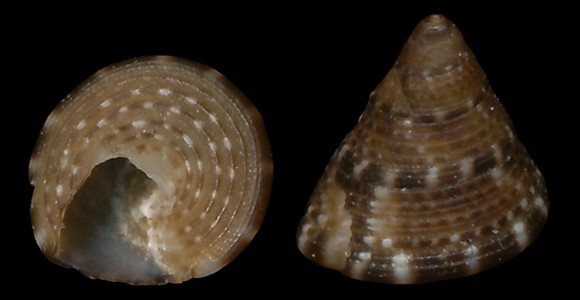
Cap d’Agde, S. France. 3,5mm.
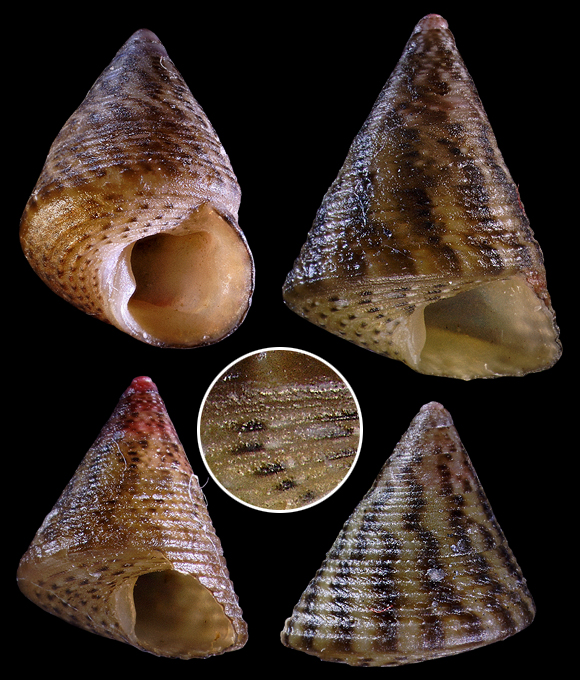
Adult and subadult specimens collected at 3-5m deep, in the wide Posidonia meadow of the Anse des Fossettes, at the root of the eastern peninsula, Saint-Jean-Cap-Ferrat, Alpes-Maritimes, SE. France. 5,5-9mm.
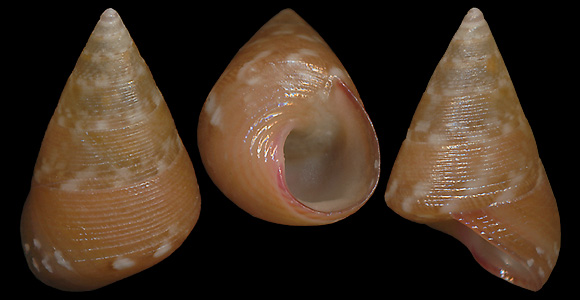
thinner spirals, less inflated sutural cord, rounded base.
Dominant in eastern Mediterranean, rare everywhere else.
8m deep, near Posidonia, Tenda Bay, NW. of Itanos, N. of Palaikastro, E. of Sitía, NE. Crete. 8,5mm.
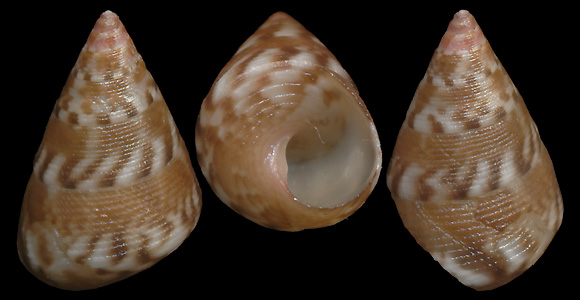
« This variety was so called by the Marquis of Monterosato because, presenting the last whorl rounded, it recalls the species of the genus Elenchus. » – A. Issel: “Crociera del Violante comandato dal Capitano-Armatore Enrico d’Albertis durante l’anno 1876. II. Resultati zoologici. Testacei”, Annali del Museo Civico di Storia Naturale di Genova vol. XI, Genova 1878, p.436. – Same spot. 7mm.
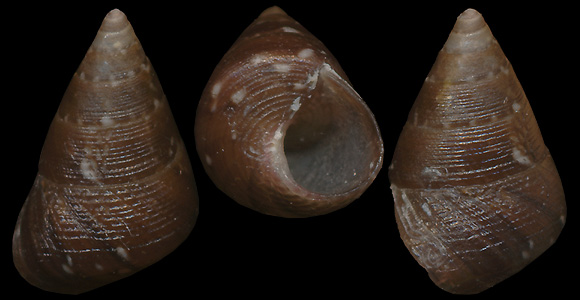
« 5° Tr. elenchoïdes Monts. = Tr. striatus, var. elenchoïdes, Issel, 1878 (Crociera des Violante, p.436, fig. 6,7). This species […] is only known from the coasts of Barbary; it is very remarkable for its rounded last whorl at the periphery, as well as for its surface which appears smooth, shiny and with metallic reflections. When examined with a magnifying glass, one notices that the entire surface is finely sculpted by numerous decurrent cords and equally numerous oblique growth streaks. The colouration is extraordinarily variable; we find brown specimens with white flames arranged in zigzags, others of an ash gray variegated with bright pink and irregular white spots, others of a light fawn color with short white longitudinal flames, arranged in fascia at the periphery of the last whorl, etc. » – Bucquoy, Dautzenberg & Dollfus: Les mollusques marins du Roussillon vol. I text, Paris 1885, p.368.
Same spot. 7,5mm.
